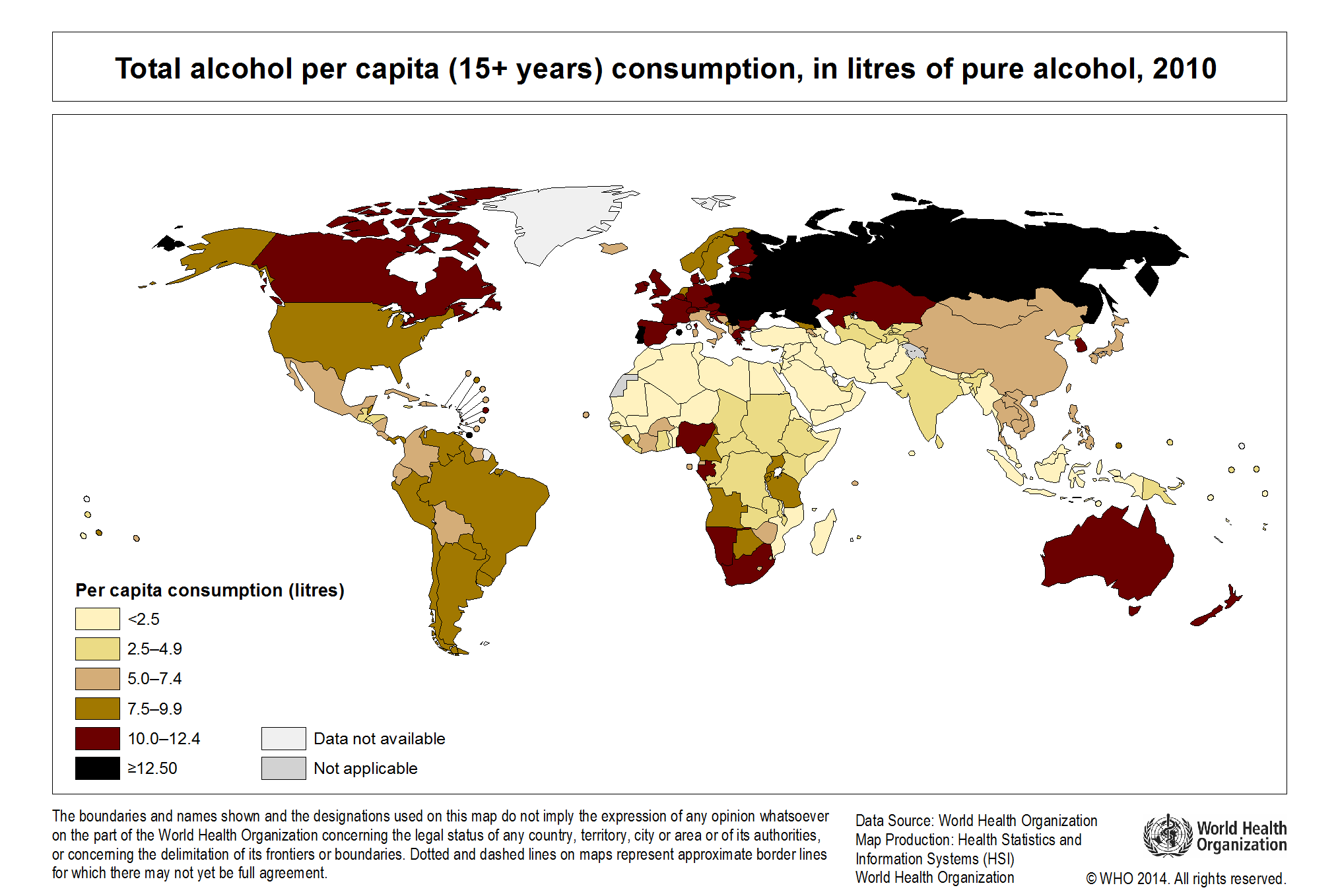Alcohol consumption is a multifaceted phenomenon that varies significantly across the globe. Understanding these disparities requires a careful examination of cultural, economic, and social factors influencing drinking habits in different countries. This exploration not only unearths the kaleidoscopic nature of alcohol consumption but also sheds light on important public health implications, particularly concerning the younger demographic.
In many instances, the proclivity for alcohol consumption is intricately woven into the societal fabric of a country. For instance, in Western Europe, alcohol is often perceived as a cultural staple, integral to social gatherings, celebrations, and culinary experiences. In contrast, regions such as the Middle East exhibit markedly lower levels of consumption, influenced by religious prohibitions and cultural attitudes towards alcohol. These divergent perspectives underscore the importance of context when analyzing alcohol consumption trends worldwide.
In a global landscape marked by increasing urbanization and globalization, the patterns of alcohol consumption are undergoing transformation. Young people, particularly in urban centers, are adapting their drinking behaviors, influenced by peer dynamics, marketing strategies, and the availability of diverse beverage options. The intersection of tradition and modernity presents a unique challenge and opportunity for understanding how alcohol consumption can be addressed, especially with respect to its impact on public health.
The multifarious nature of alcohol consumption is not solely confined to quantities consumed; it is profoundly shaped by the types of alcoholic beverages favored in a given region. The consumption of beer, wine, and spirits varies by culture, with implications for health and social interactions. This differentiation allows for a deeper insight into the broader trends and the motivations behind them.
Global Patterns of Alcohol Consumption: A Closer Look
Examining the levels of alcohol consumption by country reveals fascinating patterns that highlight regional preferences and sociocultural influences. According to various studies, countries like Czech Republic and Austria consistently rank among the highest in per capita alcohol consumption, predominantly favoring beer. The Czech culture embraces beer not merely as a beverage, but as a social lubricant inherent to its national identity.
Conversely, in countries such as France and Italy, wine holds a preeminent position within social and culinary contexts. The Mediterranean diet, with its emphasis on shared meals, coupled with societal acceptance of moderate wine consumption, has cemented wine’s role as more than just a beverage; it is viewed as a pivotal component of cultural heritage and daily life.
Emerging economies, particularly those in Asia, are observing burgeoning interest in alcohol consumption among the younger generation. In nations like China and India, the increasing influence of Western consumerism and globalization is manifesting itself in the adoption of drinking practices that were previously less common. The rise of bars, lounges, and breweries catering to young, urban demographics signals a shift in traditional norms around alcohol.
The Sober Movement: A Growing Trend
Despite the increasingly accommodating environment for alcohol, a concurrent sober movement is gaining traction, particularly among millennials and Generation Z. The embrace of sober curiosity—a philosophy advocating for reduced alcohol consumption or abstinence—reflects a growing awareness of the physical and mental health implications of excessive drinking. More young people are opting for alcohol-free alternatives, fueled by a desire for wellness and mindfulness. This shift is not merely a fleeting trend; it represents a profound cultural pivot towards valuing health and well-being over traditional drinking norms.
Influence of Marketing and Media
The marketing of alcohol plays a pivotal role in shaping consumption behaviors, particularly among youth. Advertisements often romanticize drinking, portraying it as a catalyst for social interaction, excitement, and happiness. Social media platforms magnify this effect, with influencers and celebrities frequently showcasing their drinking experiences. This portrayal creates an aspirational narrative that young audiences may subconsciously internalize, pushing them towards increased consumption.
Moreover, marketing strategies often undermine the potential dangers of excessive drinking, instead emphasizing indulgence and pleasure. These tactics can gloss over the realities of alcohol-related injuries, addiction, and mental health crises that disproportionately impact young people. Grappling with the dichotomy between curated online experiences and the stark truths of drinking can pose significant cognitive dissonance, challenging younger audiences to navigate their own relationship with alcohol.
Societal Impact: Alcohol and Health
The implications of alcohol consumption extend beyond individual choices, encompassing broader public health considerations. The World Health Organization has emphasized the correlation between high alcohol consumption rates and increased incidence of various health issues, including liver disease, mental health disorders, and numerous forms of cancer. Additionally, countries with heavy drinking cultures often report elevated rates of alcohol-related violence and accidents, creating societal burdens that must be addressed through comprehensive public health initiatives.
Strategies aimed at reducing alcohol consumption, particularly among youths, are imperative. Educational campaigns detailing the risks of excessive drinking can play a crucial role in fostering informed decision-making. Furthermore, promoting alcohol-free events in social spaces may help create environments where young individuals feel comfortable opting out of drinking without social stigma. The potential for change is palpable, as society reevaluates the deeply entrenched norms surrounding alcohol.
Conclusion: Navigating the Future of Alcohol Consumption
The landscape of alcohol consumption is shaped by an intricate tapestry of cultural, social, and economic factors that vary significantly across the globe. The increasing influence of young people—a demographic that appears both enthralled by and critical of alcohol consumption—points to an impending evolution in how societies understand and manage drinking. As the sober movement gains momentum and as awareness of public health challenges associated with alcohol continues to grow, it is vital that conversations around drinking evolve in tandem.
Engaging younger audiences in discussions surrounding alcohol consumption can foster a culture of informed choice that prioritizes health, well-being, and responsible drinking. It prompts a crucial dialogue about the implications of alcohol consumption, advocates for healthier lifestyle choices, and illuminates the pathways towards a nuanced understanding of this complex societal issue. In navigating the future of alcohol consumption, it is incumbent upon us to harness the voices of the younger generation to foster a culture built on respect, responsibility, and awareness.
